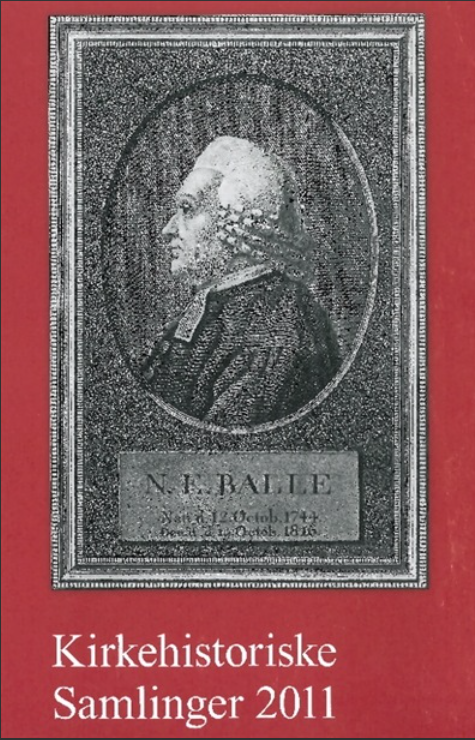Da biskop N.E. Balle blev forfatter til Balles Lærebog: En beskrivelse af tilblivelsesprocessen for Lærebog i den Evangelisk-christelige Religion, 1791.
Publiceret 25.02.2025
Citation/Eksport
Copyright (c) 2011 Tidsskriftet Kirkehistoriske Samlinger

Dette værk er under følgende licens Creative Commons Navngivelse – Ingen bearbejdelser (by-nd).
Resumé
Summary
From 1794 till 1856, Balle´s Textbook was the official textbook of Christianity for Danish pupils, and its content was expected to be known at confirmation in the Danish Church. This article shortly summarizes the previous historical reviews of how the textbook came into existence, and shows that no study so far has explained this process satisfactory. The main cause of this is that no study so far has examined the correspondence between the Bishop of Zealand N.E. Balle and The Danish Chancellery that exercised the absolute monarchy’s school and church politics. A key part of the article is an examination of the source material of this correspondence.
The beginning of the process of establishing a textbook was taken with Balle’s request to be its author on the 31st of January 1785 to the chancellery. In his request, the conservative Balle explained that his textbook would be an explanation of Luther’s Small Catechism. The new government that had seized power in 1784 was inspired by the new ideas of the Enlightenment, and the Reventlow brothers, who were the government’s most influential agents on school politics, wanted a basically new textbook. Thus the chancellery dared not approve Balle’s request. On the other hand, it did not want a conflict with Balle either, so The Danish Chancellery initially chose to ignore the request. Balle however reminded the chancellery of his inquiry, and as they ignored that as well, Balle made his request public in the book Vei til Hæderlighed for Geistlige. Presumably, this prompted the Government to give him an answer, and thus in September 1785 Balle received a diplomatic rejection.
The process of establishing a textbook continued with the establishment of the Great School Commission in May 1789. The commission was established to create a school reform, and in doing this, its members also decided to establish a new textbook of Christianity. The Reventlow brothers, N.E. Balle and an influential theologian Christian Bastholm who was influenced by modern ideas of the Enlightenment were among the members of the commission. In the commission it was decided that Balle and Bastholm together should write a new textbook, but when the first edition of the textbook was published, Balle was clearly referred to as the main author. This edition having been reviewed by the public Balle made some minor changes in a slightly more conservative direction. One matter is decisive: To become the author of the new textbook Balle had to abandon The Small Catechism as model as well as his conservative pedagogical ideas. Thus Balle had moved towards the ideas of the Reventlow brothers on central points.
The Great School Commission reviewed the textbook and presented the final edition of the textbook to the government. It was approved on June the 10th 1791, and it was settled that it be the official textbook of Christianity by 29th September 1794 onwards.

